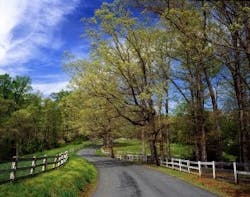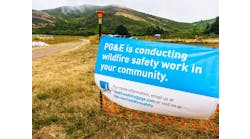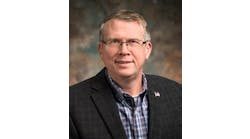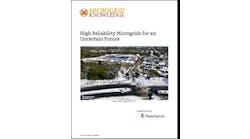Can You See the Power Plant in this Photo? No? Welcome to the Age of the Virtual Power Plant
*
No one likes to admit it, but we’ve all got a little NIMBY in us. Energy is a good thing, yes, but Not in My Backyard. Power plants just aren’t pretty.
That’s why it’s intriguing to see Charlottesville, Virginia – my backyard – on the cutting-edge of a new approach: the virtual power plant, one that you cannot see, smell, hear or touch. That’s right, it’s invisible.
The concept of the virtual power plant is still evolving and its definition varies as these projects emerge in various parts of the world. But basically it means using distributed resources, like energy efficiency, energy storage and solar, in ways that replace a conventional power plant. Here in Charlottesville the idea is to swap megawatts for negawatts; to save electricity rather than produce it.
“It is a power plant that is generated by a little piece of efficiency happening in all of these buildings that we touch,” said Cynthia Adams, executive director of the Local Energy Alliance Program (LEAP), a non-profit energy services company based in Charlottesville that is ‘building’ the virtual power plant.
For those not primed in the ways of the bulk power grid, here is how a virtual power plant comes to be: Utilities and grid operators forecast a future need for more electric capacity, say 400 MW, the size of a small power plant. Under a conventional scenario, the utility or a private developer seeks regulatory approval and builds the necessary energy infrastructure. The process can take years, especially if NIMBY protests erupt.
But the virtual power plant offers another alternative. In essence, the community meets the need for new power by no longer needing it. A group of homes and businesses are made more energy efficient so that together they cut power use by the targeted 400 MW. Their aggregated savings become the virtual power plant.
Real Money
Creating energy savings is often cheaper than creating energy, so a virtual power plant offers an appealing cost proposition. But most interesting, virtual power plants are increasingly allowed to sell their energy savings into regional wholesale power markets. Virtual power plants can make money, just as real ones do.
Sounds great, why isn’t everyone doing this?
Building a virtual power plant first necessitates getting enough households and businesses to agree to energy efficiency retrofits. Then, it requires careful execution, including the measurement and verification of savings, an understanding of complex wholesale market rules – and management of some risk. The virtual power plant must produce the energy savings it promises to a grid operator, just as a real power plant must supply electricity when needed, or face financial penalties.
So creating a virtual power plant is no small undertaking.
Cynthia Adams*
That’s where LEAP comes in. Begun in 2010, the organization has already made a name for itself as a leader and innovator in the Southeastern states. Through LEAP, Charlottesville recently participated in a 13-city challenge organized by the Southeast Energy Efficiency Alliance (SEEA) to make homes energy efficient. With a population of 44,000, Charlottesville was one of the smaller participants, yet it single-handedly completed more home energy upgrades than any other city – 34 percent of the total upgrades. The organization also has become the state’s first Home Performance with Energy Star sponsor, expanding its services to northern Virginia and acting as advisor to other areas of the state.
“To meet the energy and environmental challenges this century presents, America needs a network of LEAPs to transform our stock of over 100 million buildings into a smarter and greener infrastructure. LEAP is poised to show the way toward that brighter future based on what it has proven right here in Charlottesville,” said Bill Prindle, a member of LEAP’s governance board and a vice president at ICF International.
Next Steps
Today, LEAP faces “challenges in the transition from primarily public funding,” he added. “But we are prepared for the future by having demonstrated success in 1000+ projects, and by building a solid base of support with public leaders, contractors, utilities, lenders, and homeowners. Looking to the future, LEAP’s leadership has developed a smart, flexible business strategy that taps multiple sources for program revenue and organizational support, helping the organization to adapt nimbly to changing conditions.”
Growing increasingly adept at harnessing energy savings, LEAP is now seeking ways to gain even greater scale for a bigger market play. It is working, for example, on bringing municipal buildings, housing authorities and other public entities throughout the state into the fold.
If LEAP aggregates enough energy savings – and can successfully evaluate, measure and verify the savings – the organization hopes to sell into the voluntary carbon market and into the PJM Interconnection wholesale capacity auction in 2015. PJM, a grid operator whose territory encompasses 60 million people, has been increasingly purchasing energy efficiency as capacity. In its last annual auction, held in spring 2013, PJM cleared 1,117 MW of energy efficiency, about 21 percent more than last year. (To put that in perspective PJM expects its peak load to be about 165,000 MW for 2014/15.) The auction resulted in capacity prices that range from $59 to $219/MW-day. More details here on rules for energy efficiency in PJM auctions.
LEAP is still exploring exactly how it will approach the wholesale market. Utilities, power suppliers and others who have been participating in wholesale markets for some time offer various road maps. LEAP could act as a broker, but more likely will seek a partner to act in that capacity, while it focuses on aggregation and education. The partner would raise capital and assume financial risk. The organization also is looking into the possibility of working with a utility that would bid the virtual power plant capacity into the market. The savings could avert the utility’s need to not only build generation, but also to upgrade or expand transmission and distribution lines.
“There may be an opportunity for us to lower congestion on those lines, by targeting a particular area with energy efficiency. If we can make that cost-effective, it might be better for the utility to pay us to help them do that than it would be to put in another, bigger power line,” Adams said in a recent interview.
The utility would likely save money – since it’s often cheaper to save energy than build transmission lines. And it might spare itself significant hassle. Power lines have incited huge NIMBY protests throughout the US. But there is a larger reason, too, that the virtual power plant might appeal to a utility.
“Utilities have been around a long time and they have been focused on creating bigger, better infrastructure. Their growth is ‘more power to more people.’” Adams said. “But as disaggregated energy sources become more viable and more cost effective in the future, if I were an investor for a utility, I’d be thinking: ‘How can I hedge my bets?’ The last thing you want to end up with is stranded assets that drive up rates and drive more people off of your system. Energy efficiency is a good hedge.”
My backyard
Of course, virtual power plants can only serve so much capacity – we’ll still need new power plants and transmission lines in the years to come. Just not so many. And hopefully not in my backyard.
Can you tell us about other virtual power plants? Please post the information on our new LinkedIn Group.
*Credit Photo 1: Road in Albemarle County. Courtesy of Charlottesville Albemarle Convention & Visitors Bureau
Credit Photo 2 : Momenta Creative Photography. From National Summit on Integrating Energy Efficiency and Smart Grid






